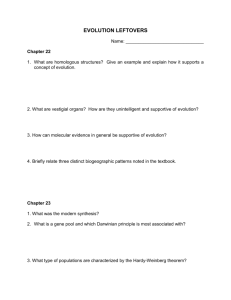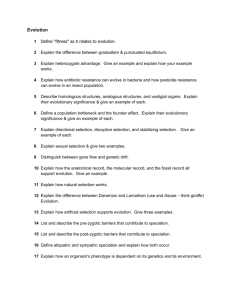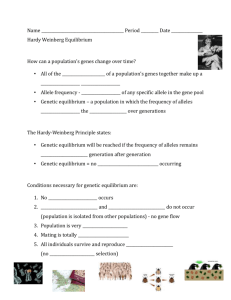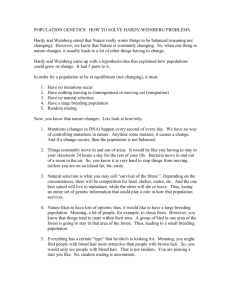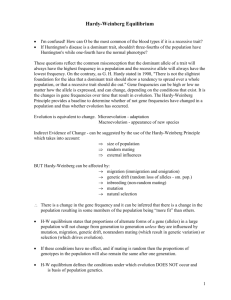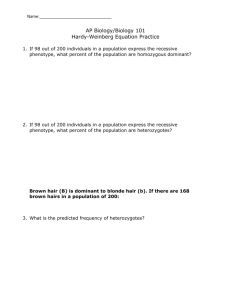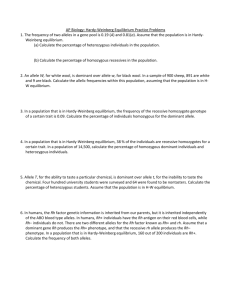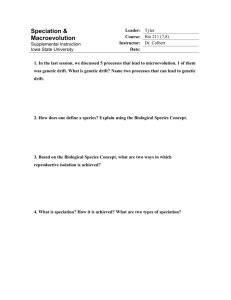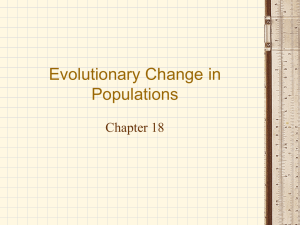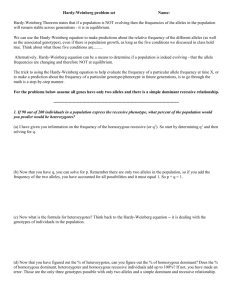File - Mr. Schmitt Biology 12 AP
advertisement
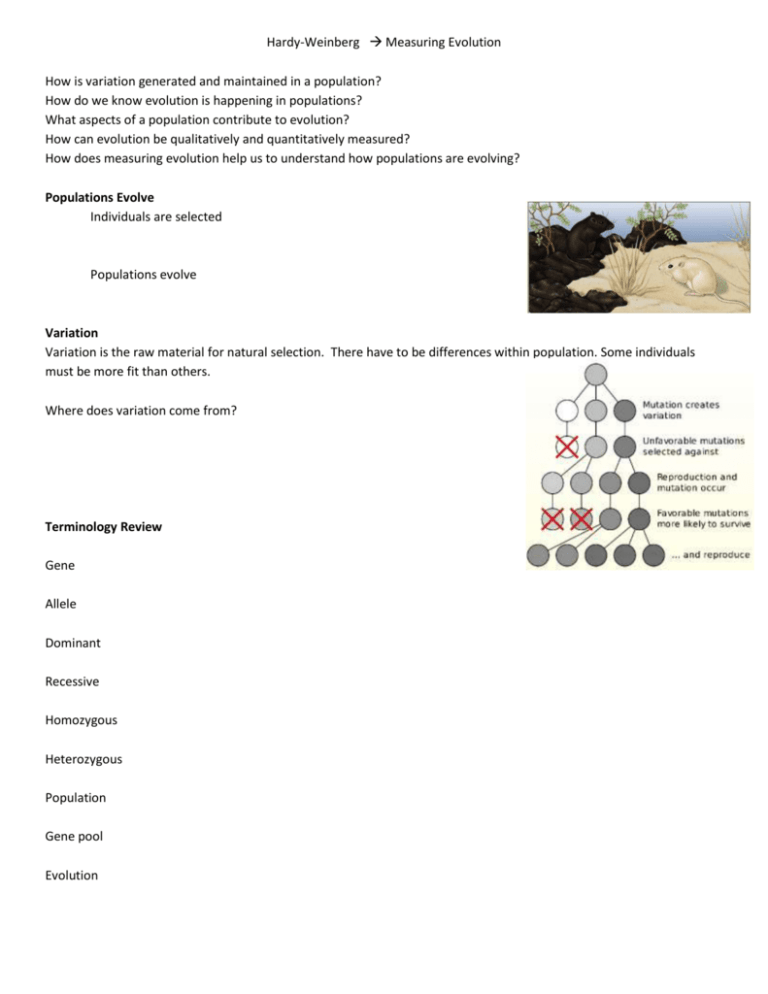
Hardy-Weinberg Measuring Evolution How is variation generated and maintained in a population? How do we know evolution is happening in populations? What aspects of a population contribute to evolution? How can evolution be qualitatively and quantitatively measured? How does measuring evolution help us to understand how populations are evolving? Populations Evolve Individuals are selected Populations evolve Variation Variation is the raw material for natural selection. There have to be differences within population. Some individuals must be more fit than others. Where does variation come from? Terminology Review Gene Allele Dominant Recessive Homozygous Heterozygous Population Gene pool Evolution Sources of Evolution 1. Mutation - Creates - Changes DNA sequence, amino acid sequence, protein structure and function, traits and maybe fitness 2. Gene Flow - Movement of - Examples: - Reduces 3. Non-random mating 4. Genetic Drift Effect of chance events - Loss of 5. Natural Selection - Differential - Combination of alleles - adaptive Hardy-Weinberg Equilibrium - Describes - Preserves - Serves - Natural populations - Useful model Hardy-Weinberg theorem: - Assume - Frequency of dominant - Frequency of recessive - Frequencies must - Frequency of homozygous dominant: Frequency of homozygous recessive: Frequency of heterozygotes: Frequencies of all individuals must Hardy-Weinberg Formulas: Gene pool: Individuals: Solving Hardy-Weinberg Problems 1. 2. 3. 4. 5. 6. Write both equations. Identify any given information Don’t screw up squaring frequencies First: Figure out q. q is the magic key to unlock the other equations. Work through the problem until all terms are solved. Practice! … This means doing your homework … A. If 64% of the individuals in a population exhibit the recessive appearance, what % of the gene pool is dominant? (assume HW equilibrium) B. A population contains individuals, 16% of whom show the recessive trait. What percent of the population is pure dominant? What percent of the gene pool is recessive? What percent of the population is hybrid? (assume HW equilibrium) C. How can you identify if a population is in HW equilibrium? Refer to the HW equations in your answer. An Application of H-W Principle: Sickle Cell Anemia - Due to Recessive allele = Dominant allele = A recessive disease: individuals must be - Symptoms: low oxygen levels cause RBC to sickle, breakdown of RBC, clogging small blood vessels, damage to organs, often lethal in childhood Sickle cell frequency: - High frequency of heterozygotes o 1 in 5 Unusual for allele with severe o - Usually In tropical Africa, malaria is common - Heterozygous - Homozygous dominant - Homozygous recessive Heterozygote carriers
